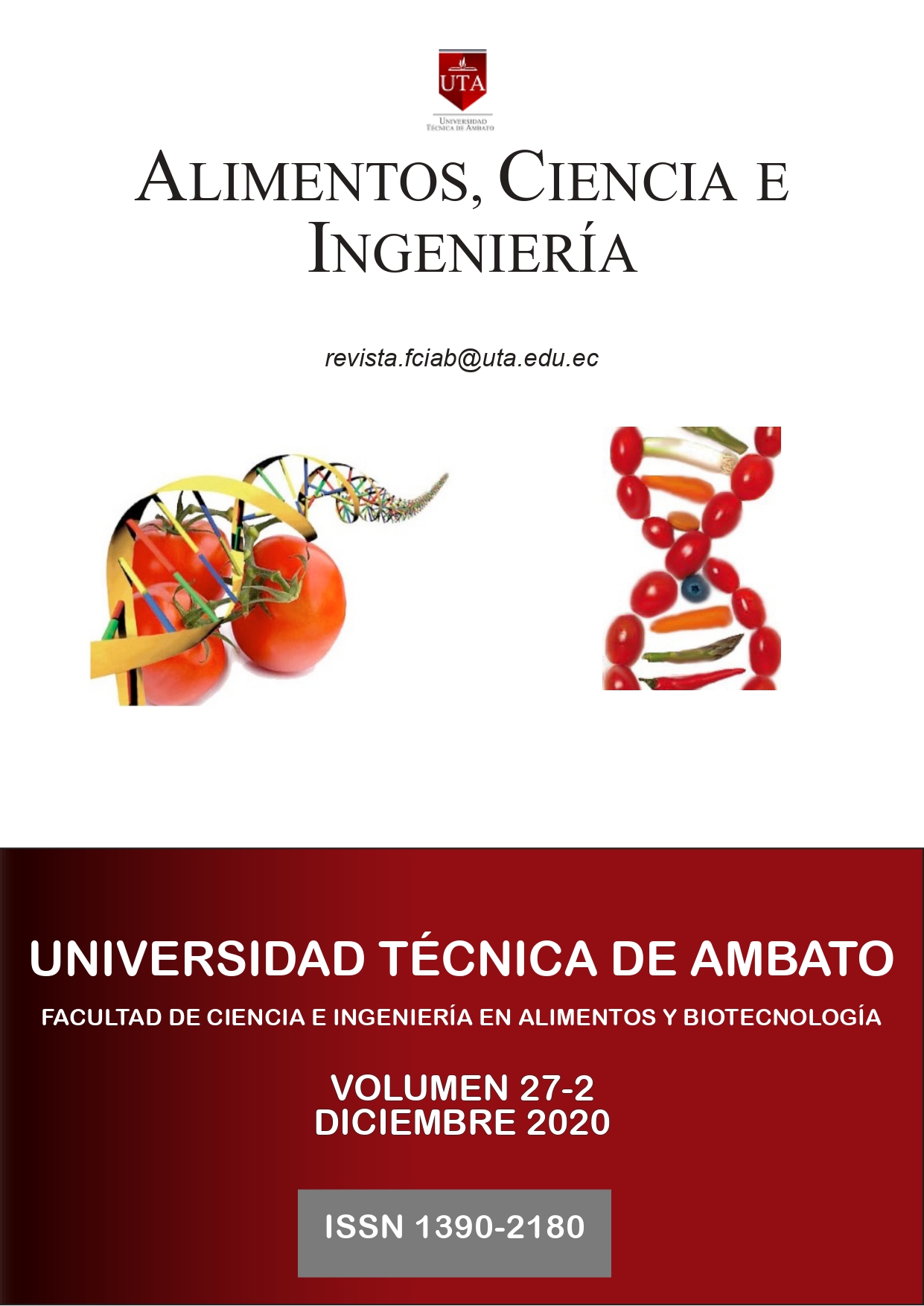CREAM LIQUEUR UVILLA FLAVOR (PHYSALIS PERUVIANA)
Main Article Content
Abstract
The uvilla is a fruit that expands in the agricultural field of Ecuador; this fruit is marketed fresh and a minimum percentage in processed fruits such as jam, puree and frozen pulp. The purpose of this project is to produce a liqueur cream flavored with uvilla, as a new alternative for industrialization in the province of Carchi; for which the drink is made by fermenting the uvilla juice for a period of 15 days, which was subsequently subjected to the simple distillation process, the degrees of alcohol were measured, then the uvilla sauce was made at a medium temperature. Once the alcohol is acquired, it is mixed with the other inputs (milk cream, uvilla sauce, uvilla alcohol), therefore, three treatments are carried out with different formulations, which a sensory analysis was applied to all treatments by means of 50 semi-trained tasters from the Universidad Politécnica Estatal del Carchi, a food engineering degree, he is able to determine which formulation has the greatest acceptance. The final product has 14 degrees of alcohol, which indicates that it is within the rules of the INEN 2802 STANDARDS; also a pH of 4.72 and 36 ° Brix; However, it is not a totally harmful drink, since it contains 40% milk cream and 30% uvilla sauce, which provide nutritional properties and health benefits
Downloads
Article Details

This work is licensed under a Creative Commons Attribution-NonCommercial 4.0 International License.
Aquellos autores/as que tengan publicaciones con esta revista, aceptan los términos siguientes:
a. Los autores/as conservarán sus derechos de copiar y redistribuir el material, bajo los términos estipulados en la Licencia de reconocimiento, no comercial que permite a terceros compartir la obra bajo las siguientes condiciones:
Atribución: debe dar el crédito apropiado, proporcionar un enlace a la licencia e indicar si se realizaron cambios. Puede hacerlo de cualquier manera razonable, pero no de ninguna manera que sugiera que el licenciante lo respalda a usted o su uso.
No comercial: no puede utilizar el material con fines comerciales.
Sin restricciones adicionales: no puede aplicar términos legales ni medidas tecnológicas que restrinjan legalmente a otros hacer cualquier cosa que la licencia permita.
References
Angulo, J y Apugllón C. (2016). Pro-yecto de exportación de merme-lada de uvilla (Tesis de grado), Escuela Superior Universidad de Guayaquil, Guayaquil, Ecuador.
Codex Stan 78-1981, c. s. (2020 de 08 de 30). Norma del Codex para coctel de fru-tas en conserva Codex Stan 78-1981. Obtenido de norma del Codex para coctel de frutas en conserva CodexS-tan781981:file:///c:/users/zsyste~1/appdata/local/temp/cxs_078s.pdf
De la Torre, N. (2017). Destilación, teoría y Tipos. Montilla (Córdova). Copyright. Recuperado de: http://www.alambi-ques.com/tecnicas_destilacion.htm
EL COMERCIO. (2011, 13 de agosto). El cul-tivo de la uvilla crece en el país. https://www.elcomercio.com/actualidad/ne-gocios/cultivo-de-uvilla-crece-pais.html http://repositorio.puce.edu.ec/bitstream/handle/22000/7412/10.C06.001401.
Fueltala, F. (2014). Proyecto de utilización de la uvilla como alternativa gastro-nómica en preparaciones de salsas, vinagretas y coulis (Tesis de gra-do), Escuela Superior Universidad Técnica del Norte, Ibarra, Ecuador.INEN 2802:2015. Bebidas alcohólicas. coc-teles o bebidas alcohólicas. mix-tas y los aperitivos. requisitos.
MIRANDA, J., y TULA, J. (2014). OPTI-MIZACIÓN DE LA TECNOLOGÍA PARA LA FORMULACIÓN DE MACERADO DE AGUAYMANTO (Physalis peruviana) (Tesis de pre-grado).UNIVERSIDAD NACIONAL DE SAN AGUSTÍN DE AREQUIPA, ARE QUIPA –PERÚ. Recuperado de: http://repositorio.unsa.edu.pe/bits-tream/handle/UNSA/4191/IAmiap-ja017.pdf?sequence=1&isAllowed=y


